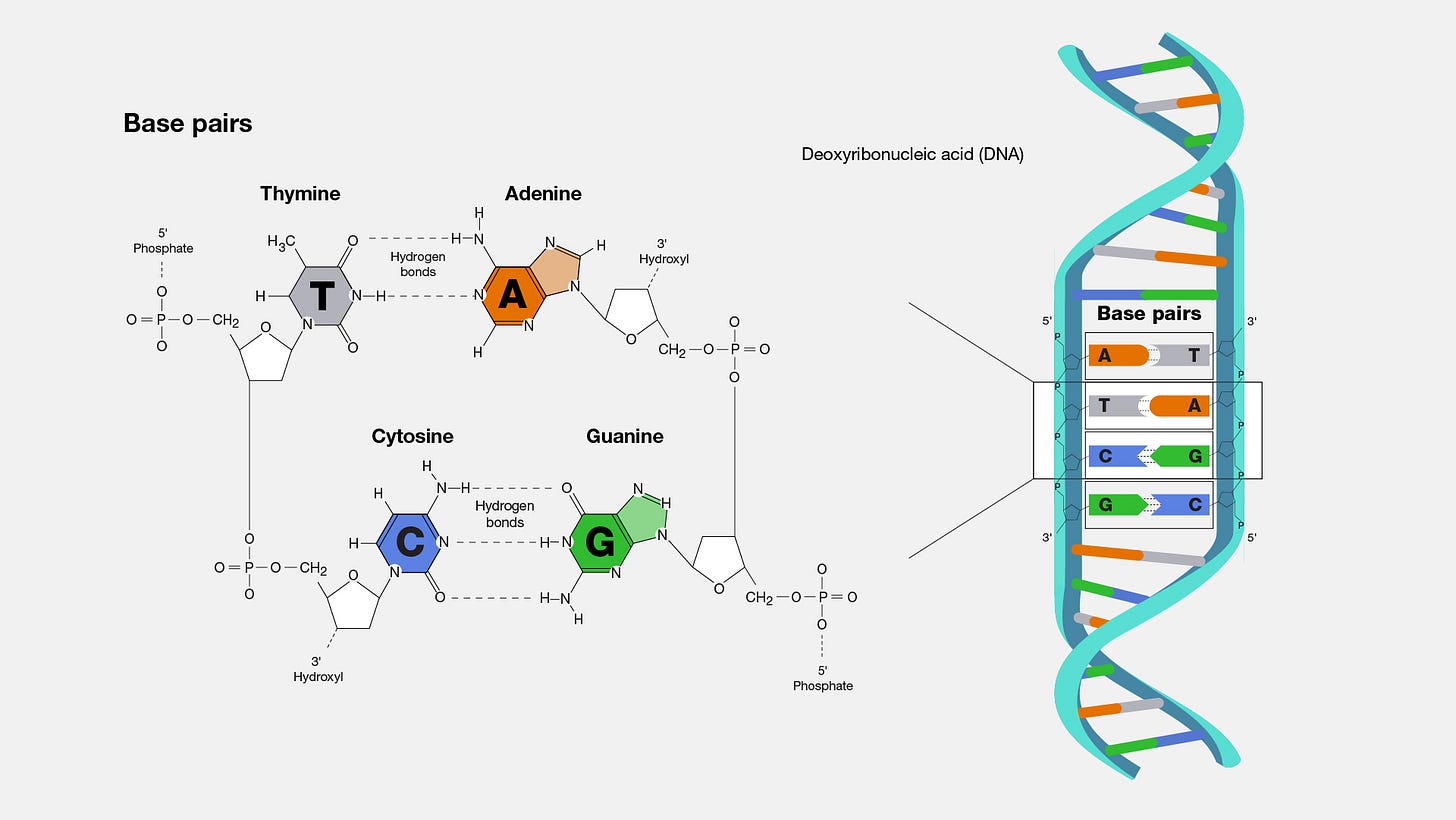In Vayikra, it is written יַעֲקֹ֖ב חֶ֥בֶל נַחֲלָתֽו [Yaakov is the rope of his inheritance]. In Tanya Likkutei Amarim, Chapter 45, the Alter Rebbe compares man’s (impetuous) thoughts in the brain to the verse above, which is the analogy of a person pulling a rope (tugging at a rope at one end vibrates the other—to illustrate how every action below causes a corresponding reaction in the Supernal Worlds).
In Tanya Likkutei Amarin, Chapter 2, the Alter Rebbe uses the metaphor of how a son is originally derived from the father’s brain, “in that the nails of his feet come into existence from the very same drop of seed, by being in the mother’s womb for nine months, descending degree by degree, changing continually, until even the nails are formed from it”. This is a reference to the Seder Hishtalshelus, which is the descent of the Infinite Light level by level until we reach the physical plane, the purpose of the descent. That is, the constriction (Tzimzum) of the infinite into a finite and limited reality (such that the Infinite Light that brings it into existence is not perceivable, from the perspective of the created being).
It is interesting that the gematria of the word חֶ֥בֶל (above) is 40, which is the same gematria as 4 yohds (10 x 4 = 40). Each of the 4 yohds may be an allusion to the 4 bases of DNA: adenine (A), cytosine (C), guanine (G) and thymine (T), implying that the "rope of inheritance" is physically manifest in DNA (which is notably a helix shape similar to a rope). Note also that there are 2 base pairs (T with A and C with G), which you can envision like a Yohd “zipper”. Temporally, DNA evolves through variation (expansion of the space through random mutation) and selective pressure (constriction of the genetic space through environment stress). This is the natural process of optimization, a physical manifestation of Hashem’s attribute of expansion (chesed) in synergy with His attribute of contraction (gevurah).
יַעֲקֹ֖ב can also be read as Yohd (יַ) + Eikev (עֲקֹ֖ב) which is the heel of the foot. That is from the brain, where Yohd represents wisdom (Chochma), to the heel (or the nail of the foot), which is the lowest level, Malchut (Malchut of Asiyah). In Tikkunei Zohar we read:
פַּתָח בְּחוּשְׁבַּן אוֹתִיּוֹתָיו אִיהוּ יוּ"ד, וּכְתִיב (תהלים קמה טז) פּוֹתֵחַ אֶת יָדֶךָ וּמַשְׂבִּיעַ לְכָל חַי רָצוֹן וְאוּקְמוּהוּ אַל תִּקְרֵי יָדֶךָ אֶלָּא יוּדֶי"ךָ, וְאִינוּן י"י מִן יאהדונה"י, וּבְאָן אֲתַר מִתְפַּתְּחִין בִּרְקִיעָא דְאִיהוּ פַּתָח, וְאִיהוּ מַפְתֵּחַ כְּלִיל אהדונ"ה שִׁית אַתְוָון בְּאֶמְצַע י"י, וּתְרֵין יוּדִין עִם רָקִיעַ דְּאִיהוּ ו' סְלִיק לְחוּשְׁבַּן יהו"ה.
Which describes the Petach vowel (אַ) which in gematria kattan is equal to 20, which is the sum of the gematria of the letter Yohd. One should interepret the first in Ashrei, פּוֹתֵחַ אֶת יָדֶךָ וּמַשְׂבִּיעַ לְכָל חַי רָצוֹן [you open Your hand and satiate each living being according to their desire], not as יָדֶךָ (Your hand) but יוּדֶי"ךָ (Your Yohds). The Zohar than explains the two Yohds as those on the outside of the word formed by interlacing of Hashem’s names of Havaya and Adnai. The Petach, which is shaped like a Vav (וֹ) is equivalent to 6 in gematria, which is the number of letters in between the two Yohds in this word.
This Yohd to Yohd flow, as it were, represents the flow of sustenance in the world from the top Yohd (Chochma) to the bottom Yohd (Malchut), which, in Kabbalah, is transmitted through the seven emotive attributes, in deepening levels of constriction. Thus we see this “rope”of inheritance as one that is cross-generational, embedded in nature, within our own soul, as the contracting levels of consciousness, and is also representative of the continuous creation of the world ex nihilo through the order of Hishtalshelus.


